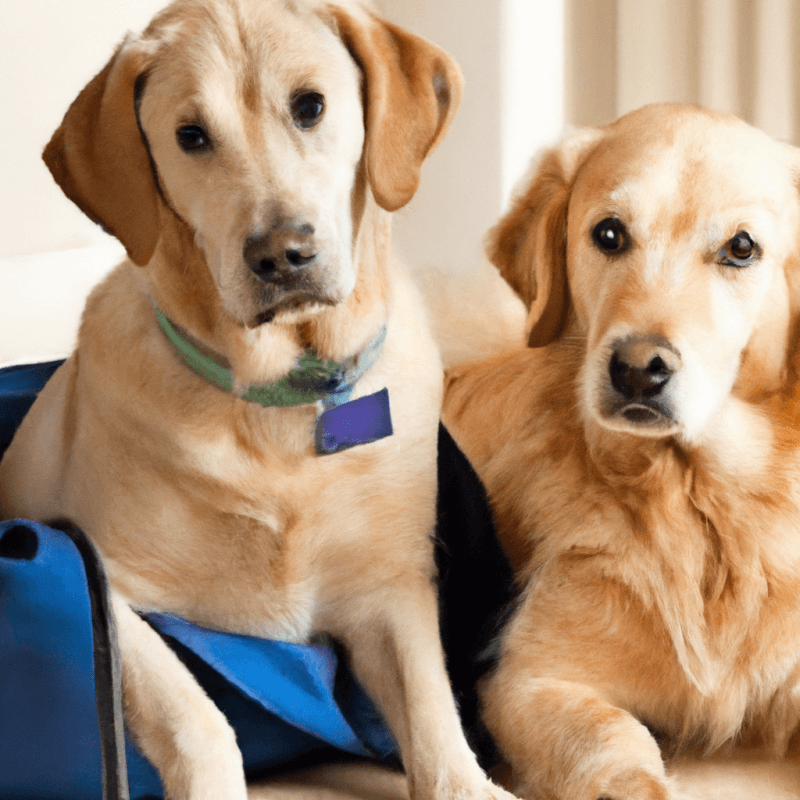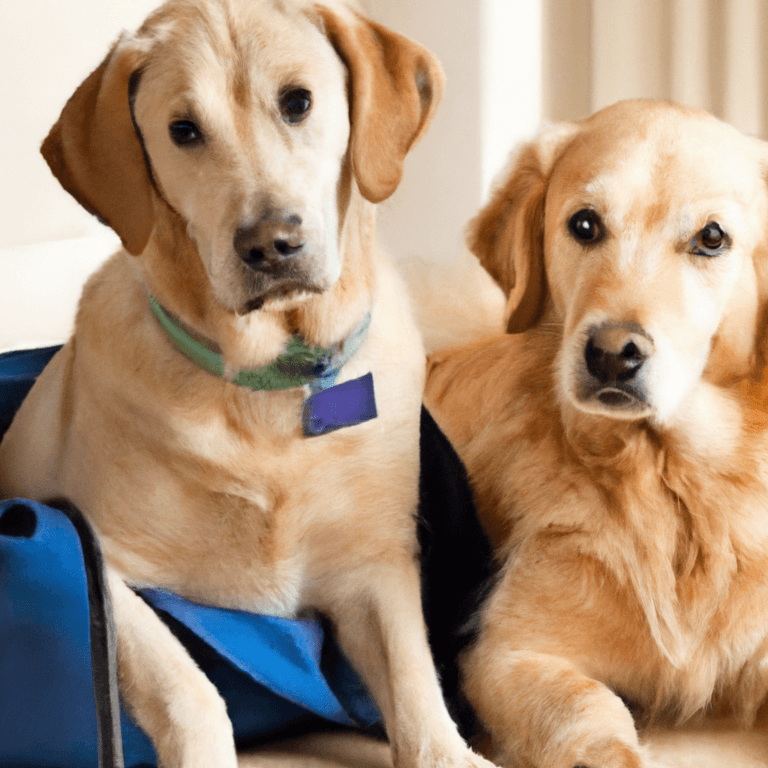Are you looking to create a warm and welcoming environment for your furry friends? If so, you’ve come to the right place! In this article, we will explore various ways to make your home more pet-friendly, ensuring that your adorable companions feel right at home. From simple adjustments to thoughtful additions, we’ll provide you with practical tips and tricks that will foster a safe and enjoyable space for your pets to thrive in. So, let’s get started on transforming your home into the perfect haven for your beloved four-legged family members!

Creating a Safe Environment
Securing Hazardous Areas
When it comes to ensuring the safety of your furry friends, it’s crucial to identify and secure any hazardous areas in your home. This includes locking cabinets and drawers that contain cleaning supplies, chemicals, or medications that could be toxic to pets. Additionally, be mindful of open or accessible spaces like balconies, windows, or staircases that could pose a danger to your pets. Installing baby gates or pet gates can have a significant impact in restricting access to these areas and preventing accidents.
Ready for Cat Trivia?
Test your knowledge about cats!

Investing in Pet Gates
Pet gates are not only useful for restricting access to hazardous areas but also for creating boundaries within your home. They can be particularly beneficial for keeping pets out of certain rooms or away from areas where they could easily get into trouble. Pet gates come in a variety of sizes and styles, including freestanding, pressure-mounted, and hardware-mounted options, making it easy to find the perfect fit for your home. By investing in pet gates, you can promote a safe and secure environment for your pets.
Removing Toxic Plants
Many indoor and outdoor plants can be toxic to pets if ingested, so it’s essential to identify and remove any potentially harmful vegetation from your home and garden. Some common plants that can be toxic to pets include lilies, daffodils, aloe vera, and certain species of ferns. Researching pet-safe plants or consulting with a veterinarian can help you select greenery that will not pose a risk to your furry friends. By removing toxic plants from your home, you can greatly reduce the risk of accidental poisoning and create a safer environment for your pets.
Ensuring Electrical Safety
Electrical cords and wires can be enticing chew toys for pets, but they also pose a serious risk of electrocution. To ensure electrical safety, it’s important to tidy up any loose cords and wires by using cable organizers or concealing them behind furniture. Additionally, consider using cord protectors or bitter sprays specifically designed to deter pets from chewing on cords. If you have outlets at pet-level, you may want to consider using outlet covers to prevent pets from tampering with them. Taking these precautions will help safeguard your pets from potential electrical hazards.
Tidying up Loose Cords and Wires
In addition to ensuring electrical safety, tidying up loose cords and wires can also help prevent accidents and injuries. Pets, especially those who are young or curious, may become entangled or trip over loose cords, leading to falls, unwanted tugging of electronics, or even choking hazards. By using cord clips or organizers, you can secure cords against walls or furniture, keeping them out of your pet’s reach. Taking this simple step will not only make your home safer but also help maintain a neat and clutter-free environment.
Providing Comfortable Spaces
Designating a Pet-Friendly Zone
For pets to feel truly at home, it’s essential to designate a specific area or room that is entirely dedicated to them. This pet-friendly zone can be a place where your furry friends can retreat to when they need some quiet time or feel the need to be alone. Consider using a spare room, a laundry area, or even a section of a larger room to create this space. By providing a designated area for your pets, you are giving them a sense of security and belonging in your home.
Choosing Pet-Friendly Furniture
When selecting furniture for your home, it’s important to keep your pets in mind. Opt for materials that are pet-friendly, such as microfiber, leather, or tough fabrics that can withstand scratching or accidental spills. Avoid delicate materials like silk or velvet that can easily snag or stain. Additionally, consider furniture with removable and washable covers to make cleaning up pet hair or accidents easier. By choosing pet-friendly furniture, you can create a comfortable and worry-free space for both you and your pets.
Creating Cozy Nooks
Pets, just like humans, appreciate having their own cozy nooks to relax and unwind. Providing soft blankets, cushions, or pet-sized beds in different areas of your home can offer your pets a sense of comfort and security. Consider placing these cozy nooks near windows for natural light or next to heat sources like radiators or fireplace mantels for warmth. By creating these inviting spaces, you are ensuring that your pets have multiple options for finding their own little havens of relaxation.
Setting up Pet Beds
While cozy nooks are great for resting spots throughout your home, it’s important to provide your pets with dedicated pet beds as well. Pet beds are specifically designed to offer support, comfort, and insulation for your furry friends. There is a wide range of pet bed styles available, from traditional plush beds to orthopedic options for older pets or those with joint issues. By giving your pets their own beds, you are providing them with a personal space to call their own, promoting a sense of security and relaxation.
Offering Adequate Shelter
If you have an outdoor area that your pets have access to, it’s crucial to provide them with adequate shelter from the elements. This can be in the form of a sturdy doghouse or a covered area where they can seek refuge from rain, excessive heat, or cold temperatures. Ensure that the shelter is well-insulated, elevated to prevent water accumulation, and includes comfortable bedding. By offering your pets a safe and comfortable shelter outdoors, you are enabling them to enjoy the fresh air while keeping them protected from extreme weather conditions.
Promoting Physical Activity
Building a Fenced Yard
One of the best ways to promote physical activity and provide a safe space for your pets to roam freely is by fencing your yard. A fenced yard allows your pets to explore, play, and exercise without the risk of them wandering off or encountering potential dangers. When building a fence, make sure it is secure, without any gaps or holes that pets could squeeze through. The height of the fence should also be appropriate for the size and breed of your pets. By having a fenced yard, your pets can enjoy outdoor activities in a controlled and secure environment.
Constructing a Secure Outdoor Space
If you don’t have the option to build a fenced yard, creating a secure outdoor space is a viable alternative. This can include installing a dog run or a catio (a screened-in porch or balcony) where your pets can safely experience the outdoors. Ensure that the structure is sturdy and escape-proof, and consider providing engaging elements such as climbing structures or scratching posts for cats. Offering a secure outdoor space gives your pets the opportunity to enjoy fresh air and sunlight while minimizing the risk of them wandering off or encountering potential hazards.
Installing Pet Doors
If you want to give your pets the freedom to come and go as they please, installing pet doors can be an excellent solution. Pet doors allow your pets to access the outdoors whenever they need to relieve themselves or simply go for a walk in the yard. However, it’s essential to choose the right size of pet door to prevent unwanted visitors or potential security risks. Some pet doors even have electronic features that only allow entry to pets wearing a corresponding collar or tag. By installing pet doors, you can provide your pets with a convenient way to enjoy the outdoors while maintaining their safety.
Providing Interactive Toys
Interactive toys are essential for keeping your pets mentally stimulated and physically active. Choose toys that encourage play, problem-solving, and exercise. Puzzle toys that dispense treats or require your pets to figure out how to get to a hidden reward can challenge their minds while keeping them engaged. Toys with bells, feathers, or laser pointers can entice cats to play and exercise. For dogs, consider toys that can be filled with treats or toys designed for tug-of-war or fetching. By providing interactive toys, you can ensure that your pets remain mentally and physically stimulated, even when you’re not able to give them your full attention.
Engaging in Regular Exercise
Regular exercise is essential for the overall health and well-being of your pets. Exercise not only helps pets burn off excess energy but also supports weight management and reduces the risk of behavioral problems. Engage in daily walks, play sessions, or interactive games with your pets to ensure they get the exercise they need. The type and duration of exercise will vary depending on the age, breed, and health of your pets. Consulting with a veterinarian can help you determine an appropriate exercise routine for your pets. By committing to regular exercise, you are promoting a healthy and active lifestyle for your furry friends.
Establishing a Pet-Friendly Routine
Maintaining a Consistent Feeding Schedule
Establishing a consistent feeding schedule is vital in creating a sense of routine and security for your pets. Feed your pets at the same time every day, preferably in a quiet and designated space. Avoid leaving food out all day, as it can lead to overeating and potential weight-related health issues. Consult with your veterinarian to determine the appropriate amount and type of food for your pets based on their age, breed, and activity level. By maintaining a consistent feeding schedule, you are providing structure and stability in your pets’ lives.
Setting up a Pet Hygiene Routine
Maintaining proper hygiene for your pets is crucial for their health and comfort. Establish a regular grooming routine that includes brushing their fur, trimming their nails, and cleaning their ears and teeth. The frequency of grooming will depend on the type of pet you have and their individual needs. Regular grooming not only keeps your pets looking their best but also helps prevent matting, skin irritations, dental issues, and in the case of cats, hairballs. By setting up a pet hygiene routine, you are ensuring that your pets remain clean, healthy, and comfortable.
Establishing Regular Bathroom Breaks
Whether you have cats using litter boxes or dogs needing regular outdoor bathroom breaks, establishing a routine for bathroom breaks is essential. Cats typically prefer clean litter boxes and may require multiple boxes in a multi-cat household. Dogs should be taken outside at regular intervals, especially after meals and naps. Consistency in bathroom breaks helps prevent accidents and promotes good bathroom habits in your pets. By establishing regular bathroom breaks, you are fostering a clean and hygienic environment for both you and your pets.
Maintaining a Training Schedule
Training is an important aspect of ensuring that your pets behave properly and understand basic commands. Consistency is key when it comes to training, so establish a training schedule that allows for regular sessions. Keep training sessions short, positive, and rewarding for your pets. Focus on teaching basic commands like sit, stay, come, and walking on a leash. Training not only helps prevent unwanted behaviors but also strengthens the bond between you and your pets. By maintaining a training schedule, you are setting your pets up for success and promoting a harmonious living environment.
Creating a Relaxation Routine
Just as humans benefit from relaxation routines, so do our furry companions. Establish a routine that includes quiet and calming activities for your pets, especially before bedtime. This can include gentle play sessions, brushing or petting sessions, or providing puzzle toys that encourage mental relaxation. Avoid loud noises or stimulating activities close to bedtime. By creating a relaxation routine, you are helping your pets wind down and prepare for a restful night’s sleep.

Ensuring Proper Nutrition
Consulting with a Veterinarian
Proper nutrition is vital for your pets’ overall health and well-being, so consulting with a veterinarian is crucial in determining their dietary needs. A veterinarian can provide guidance on selecting the right type and quality of pet food suited to your pets’ breed, age, and any specific health considerations. They can also offer advice on portion sizes, feeding frequency, and the introduction of any necessary supplements. By consulting with a veterinarian, you are ensuring that your pets receive the proper nutrition they need to thrive.
Choosing High-Quality Pet Food
Investing in high-quality pet food is an investment in your pets’ health. Look for pet food that features real meat or fish as the primary ingredient, without artificial preservatives, colors, or fillers. Avoid pet foods that contain excessive amounts of grain or by-products. Understanding the nutritional needs of your pets, such as the appropriate balance of proteins, fats, and carbohydrates, can help you make informed decisions when choosing pet food. By choosing high-quality pet food, you are providing your pets with the essential nutrients they require for optimal health.
Providing Fresh Water
Access to fresh, clean water is essential for your pets’ hydration and overall health. Make sure to have multiple water sources available throughout your home, especially in areas where your pets spend the most time. Regularly check and refill the water bowls to ensure they are consistently clean and replenished. Some pet owners may choose to invest in pet water fountains, which can encourage pets to drink more water due to their flowing nature. By providing fresh water, you are promoting proper hydration for your pets.
Avoiding Harmful Foods and Substances
Certain foods and substances can be toxic to pets and should be avoided at all costs. Common foods that are hazardous to pets include chocolate, grapes, raisins, onions, garlic, caffeine, alcohol, and certain artificial sweeteners like xylitol. Additionally, many household plants, cleaning products, and pesticides can pose a significant danger to your pets if ingested or inhaled. Familiarize yourself with a comprehensive list of toxic foods and substances and keep them safely stored and out of your pets’ reach. By avoiding harmful foods and substances, you can prevent potential poisoning and protect your pets’ health.
Monitoring Portion Sizes
Maintaining a healthy weight is crucial for your pets’ overall health and longevity. It’s important to monitor portion sizes and avoid overfeeding. Consult with your veterinarian to determine the appropriate amount of food based on your pets’ age, weight, breed, and activity level. Feeding guidelines provided by pet food manufacturers are useful as a starting point but may need to be adjusted based on your pets’ individual needs. Remember to adapt portion sizes as they grow, age, or if they undergo any significant lifestyle changes. By monitoring portion sizes, you are ensuring that your pets receive appropriate nutrition while maintaining a healthy weight.
Keeping a Clean and Pet-Friendly Home
Regular Vacuuming and Dusting
Pets, especially those with fur or feathers, can contribute to dust, dander, and hair build-up in your home. Regular vacuuming and dusting help minimize allergens and maintain a clean environment. Use a vacuum cleaner with a HEPA filter to effectively capture pet hair and allergens. Dusting furniture, shelves, and surfaces with a microfiber cloth or electrostatic duster will help remove lingering pet hair and dander. By incorporating regular vacuuming and dusting into your cleaning routine, you can reduce the presence of allergens and maintain a clean and comfortable home for both your pets and yourself.
Using Pet-Friendly Cleaning Products
When cleaning your home, it’s important to use pet-friendly cleaning products. Many conventional cleaning products contain harsh chemicals that can be toxic to pets if ingested or exposed to their sensitive paws or skin. Opt for pet-safe alternatives that are specifically formulated for use around animals. Natural cleaning solutions, such as vinegar and water, or pet-safe enzymatic cleaners, can effectively clean and deodorize without posing a risk to your pets’ health. By using pet-friendly cleaning products, you can maintain a clean and sanitary home while minimizing the risk of harmful exposure to your pets.
Minimizing Allergens
Allergens like pet hair, dander, and dust mites can trigger allergies or respiratory issues in both humans and pets. Minimizing allergens in your home is key to creating a comfortable environment for everyone. In addition to regular vacuuming and dusting, consider using allergen-reducing air filters or air purifiers to help remove airborne particles. Wash your pets’ bedding regularly to reduce the accumulation of allergens. You may also want to consider designating certain areas or rooms as pet-free zones to provide relief for individuals with allergies. By minimizing allergens, you are promoting a healthier living space for both you and your pets.
Managing Pet Hair and Dander
Pet hair and dander can quickly accumulate on furniture, floors, and clothing. Managing pet hair and dander is essential to maintain a clean and pet-friendly home. Regularly brushing your pets can help control shedding and reduce the amount of loose hair around your home. Use lint rollers or pet hair removal tools to quickly and easily remove pet hair from clothing and upholstery. Consider using furniture covers or blankets to protect your furniture from excessive hair buildup. By managing pet hair and dander, you can keep your home looking clean and tidy, even with furry companions.
Eliminating Pet Odors
Pets, especially those who spend time indoors, can sometimes leave behind odors that can be unpleasant. Eliminating pet odors helps create a fresh and welcoming home environment. Regularly clean and deodorize pet bedding, blankets, and toys to reduce odors. If accidents occur, clean up any messes promptly and thoroughly using enzymatic cleaners specifically designed to neutralize pet odors. Regularly open windows or use air fresheners or odor-neutralizing sprays to keep your home smelling fresh. By eliminating pet odors, you are ensuring a pleasant living environment for both you and your pets.

Creating a Pet-Friendly Garden
Choosing Pet-Safe Plants
If you have a garden or outdoor space, it’s essential to choose plants that are safe for your pets. Some common plants, such as lilies, tulips, azaleas, and certain varieties of ivy, can be toxic to pets if ingested. Research pet-safe plant options or consult with a veterinarian or horticulturist for guidance on selecting pet-friendly vegetation. Consider planting pet-friendly herbs such as catnip or cat grass, which can provide enrichment for cats. By choosing pet-safe plants, you can create a beautiful and safe outdoor environment for your pets to enjoy.
Securing the Garden
Ensuring that your garden is secure is essential to prevent your pets from escaping or encountering potential dangers. Regularly inspect fences, gates, and any other barriers for any gaps, holes, or loose components that pets might exploit. Reinforce or repair any areas of concern promptly. Consider using pet-proof fencing materials or adding an additional layer of wire mesh or netting if necessary. By securing the garden, you can provide a safe and enclosed space for your pets to explore and enjoy the outdoors.
Avoiding Harmful Pesticides
When tending to your garden, it’s important to avoid using pesticides, herbicides, or fertilizers that could be toxic to your pets. Many of these chemical substances can cause serious health issues if ingested or if pets come into contact with them. Look for pet-safe alternatives or opt for organic gardening practices. If you do use any chemicals in your garden, ensure that they are applied in areas inaccessible to your pets and follow the manufacturer’s instructions carefully. By avoiding harmful pesticides, you are prioritizing your pets’ well-being and safety.
Providing Shade and Water
Just like humans, pets need shade and fresh water when spending time outdoors. Ensure that your garden provides areas of shade where your pets can retreat to on hot or sunny days. This can be in the form of trees, awnings, or designated shaded areas with umbrellas or canopies. Additionally, always have fresh water available for your pets to drink. Consider using outdoor pet water fountains or multiple water bowls strategically placed throughout the garden to encourage hydration. By providing shade and water, you are ensuring that your pets can safely enjoy the outdoors without suffering from heat stroke or dehydration.
Creating a Pet-Friendly Play Area
Designating a pet-friendly play area within your garden can provide your pets with a designated space for fun and exercise. This area can be fenced off or separated from other parts of the garden to prevent pets from wandering into potentially hazardous areas or damaging delicate plants. Consider adding grassy areas, play structures, or obstacle courses to keep your pets mentally engaged and physically active. Including toys or interactive elements that encourage play can also enhance the play area. By creating a pet-friendly play area, you are promoting physical activity and enjoyment for your pets in a safe and controlled environment.
Preparing for Emergencies
Creating a Pet Emergency Kit
Preparing an emergency kit specifically tailored to your pets is vital in ensuring their safety during unforeseen events. This kit should include essential supplies such as food, water, medications, identification documents, a pet first aid kit, and comfort items like blankets or toys. Store the emergency kit in an easily accessible location and make sure all family members are aware of its contents and location. Regularly check and replenish the supplies to ensure they are not expired or outdated. By creating a pet emergency kit, you are proactive in protecting your pets in case of unexpected emergencies.
Ensuring Proper Identification
Proper identification is crucial in reuniting lost pets with their owners in emergencies. Make sure your pets are wearing collars with identification tags that include your contact information. Microchipping is also recommended as a permanent form of identification. Ensure that the microchip information is up to date with your current contact details. Keep recent photos of your pets in case you need to provide identifying information to authorities or post missing pet notices. By ensuring proper identification, you are increasing the chances of a timely reunion with your pets in the event of an emergency.
Knowing the Nearest Emergency Vet
In emergencies, knowing the location and contact details of the nearest emergency veterinarian clinic can be crucial. Research and familiarize yourself with the closest emergency vet clinic to your home, and keep their contact information readily available. Consider saving the information in your phone or having it posted in a visible area of your home. Knowing where to go in case of a medical emergency can greatly reduce response time and provide peace of mind. By knowing the nearest emergency vet, you are prepared to act swiftly and efficiently in times of crisis.
Establishing an Emergency Plan
Creating an emergency plan that includes your pets is essential for their safety and well-being in various scenarios. Determine designated meeting areas or rally points for family members and pets in case of evacuation. Prepare an evacuation kit for your pets, which includes their emergency supplies, leashes, harnesses, and carriers. Identify pet-friendly hotels or shelters in your area that would accept pets in emergency situations. By establishing an emergency plan, you are ensuring that your pets are included and accounted for in your family’s overall safety strategy.
Training for Calmness in Stressful Situations
Training your pets to remain calm during stressful situations can make a significant difference in their safety and the safety of those around them in emergency scenarios. Use positive reinforcement techniques to help your pets stay calm during loud noises, unfamiliar situations, or in the presence of strangers. Gradually expose them to these situations and reward calm behavior with treats and praise. If your pets show signs of anxiety or fear, consult with a professional trainer or behaviorist for guidance. By training for calmness, you are equipping your pets with the skills to navigate emergency situations more calmly and confidently.

Addressing Behavioral Issues
Enriching the Environment with Toys and Puzzles
Addressing behavioral issues in pets often requires mental stimulation and enrichment. Providing a variety of toys and puzzles can help engage your pets’ minds and redirect their energy into positive outlets. Interactive toys, treat-dispensing toys, and puzzle games can help keep your pets mentally stimulated and prevent boredom-induced destructive behaviors. Rotate the toys regularly to maintain their novelty and engage your pets’ curiosity. By enriching the environment with toys and puzzles, you are promoting mental well-being and reducing the likelihood of behavioral issues.
Addressing Separation Anxiety
Separation anxiety is a common issue for many pets and can lead to destructive behaviors and excessive vocalization when left alone. Addressing separation anxiety requires patience and a gradual approach. Start by desensitizing your pets to your departures by gradually increasing the duration of time they spend alone. Provide distractions such as puzzle toys or treat-filled toys to keep them occupied. Consider using calming techniques like pheromone diffusers, calming music, or medication as recommended by a veterinarian or animal behaviorist. By addressing separation anxiety, you are ensuring that your pets feel more secure and comfortable when left alone.
Implementing Positive Reinforcement Training
Positive reinforcement training is a highly effective method of addressing behavioral issues and teaching desirable behaviors to your pets. This training technique focuses on rewarding your pets for correct behavior rather than punishing them for mistakes. Use treats, praise, and affection to reward your pets for good behavior and ignore or redirect unwanted behavior. Consistency and patience are key when implementing positive reinforcement training. If you encounter challenges or need guidance, consult with a professional trainer or behaviorist. By implementing positive reinforcement training, you are encouraging positive behaviors and reinforcing the bond between you and your pets.
Considering Professional Help
In some cases, addressing behavioral issues may require the expertise of a professional animal behaviorist or trainer. Professional help can provide a wealth of knowledge and experience in dealing with specific behaviors and can offer tailored solutions for your pets. Look for trainers or behaviorists who use positive reinforcement methods and have experience working with your particular pet species or breed. By considering professional help, you are demonstrating your commitment to resolving behavioral issues and providing your pets with the best possible care.
Creating a Consistent Routine
Establishing a consistent routine is essential in addressing behavioral issues and promoting a sense of structure and security for your pets. Pets thrive on predictability, so providing a daily routine that includes regular feeding, exercise, playtime, and rest periods can help prevent unwanted behaviors. Consistency extends to training methods, expectations, and rules within your home. Make sure that all family members are actively involved in following the routine and maintaining consistency. By creating a consistent routine, you are providing your pets with stability and decreasing the likelihood of behavioral issues.
Having a Welcoming Home for Guests
Informing Guests About Your Pet
Informing your guests about the presence of pets in your home is essential for creating a comfortable environment for both your pets and your guests. Some individuals may have allergies or fears related to animals. By letting your guests know in advance, they can prepare appropriately or adjust their expectations. Inform your guests about any specific guidelines or rules regarding interacting with your pets, such as not allowing them on furniture or refraining from feeding them human food. By openly communicating about your pets, you are fostering a welcoming atmosphere for both your guests and your pets.
Setting Clear Boundaries for the Pet
Setting clear boundaries for your pets is essential to prevent them from becoming overly excited or unruly when guests visit. Outline specific areas in your home where pets are not allowed during gatherings, such as the dining room or guest bedrooms. Use baby gates or closed doors as barriers to prevent your pets from accessing these areas. If needed, consider providing a quiet and comfortable space for your pets away from the main gathering area. By setting clear boundaries, you are creating a harmonious environment where both your guests and your pets can coexist comfortably.
Providing a Quiet Space for the Pet
Not all pets enjoy the hustle and bustle of social gatherings. Providing a quiet space where your pet can retreat to during gatherings can help them feel at ease and prevent stress-related behaviors. This can be a spare room, a designated area in a quiet corner, or even a crate or pet carrier where they feel secure. Make sure to provide comfortable bedding, water, and a soothing environment to help your pet relax. Inform your guests about the designated quiet space to ensure they respect your pet’s need for solitude. By offering a quiet space, you are prioritizing your pet’s well-being and providing them with a peaceful retreat during social events.
Managing Allergies and Sensitivities
If any of your guests have allergies or sensitivities to pets, there are several measures you can take to accommodate their needs. Thoroughly clean your home before the gathering, paying close attention to areas where your pets spend the most time. Use allergen-reducing air filters or purifiers to minimize airborne allergens. Consider having a designated pet-free zone in your home where guests with allergies can feel more comfortable. Additionally, encourage guests to inform you in advance about any specific allergies or sensitivities they have, so you can take appropriate steps to address their needs. By managing allergies and sensitivities, you are ensuring a welcoming and inclusive environment for all individuals, including those with pet-related allergies.
Encouraging Interaction with the Pet
For guests who enjoy the company of pets and wish to interact with them, encourage positive and respectful interactions. Ensure that your pet is comfortable around new people and monitor the introductions. Advise guests to approach your pets gently, allow the pets to approach them if they feel comfortable, and avoid making sudden movements or loud noises. Some pets may be shy or have specific boundaries, so communicate any guidelines or signs that your pet may exhibit if they need space. By encouraging interaction with your pets, you are providing an opportunity for positive socialization and shared enjoyment between your guests and your pets.
In conclusion, making your home more pet-friendly involves creating a safe environment, providing comfortable spaces, promoting physical activity, establishing a pet-friendly routine, ensuring proper nutrition, keeping a clean and pet-friendly home, creating a pet-friendly garden, preparing for emergencies, addressing behavioral issues, and having a welcoming home for guests. By following the tips and suggestions outlined in this article, you can transform your home into a safe, comfortable, and enjoyable space for both you and your pets. Remember, a pet-friendly home promotes not only the well-being of your furry friends but also enhances the bond and happiness of your entire family.



